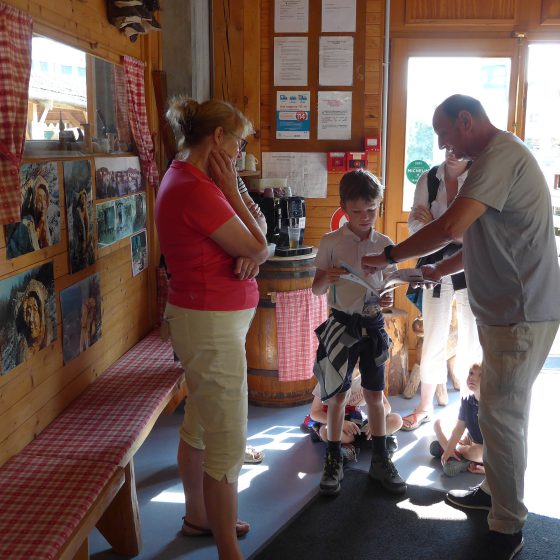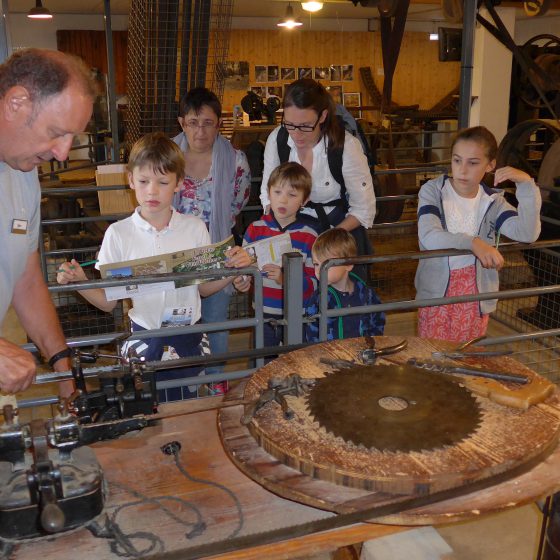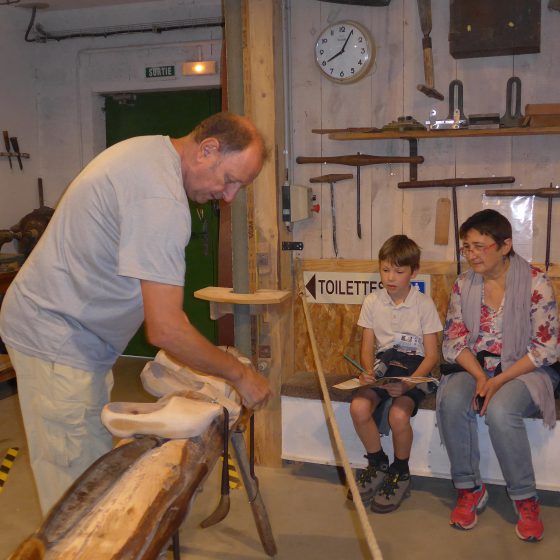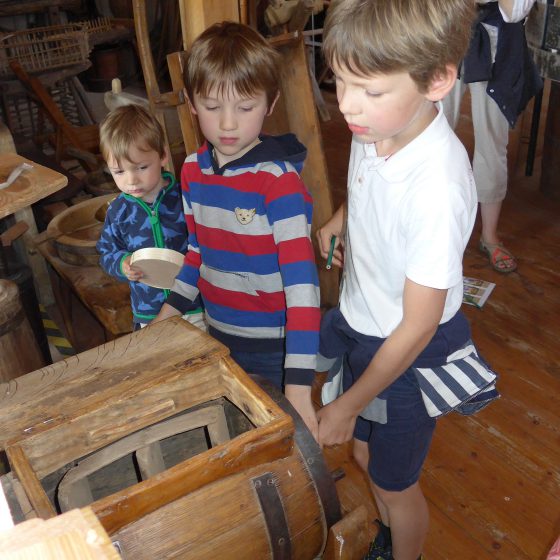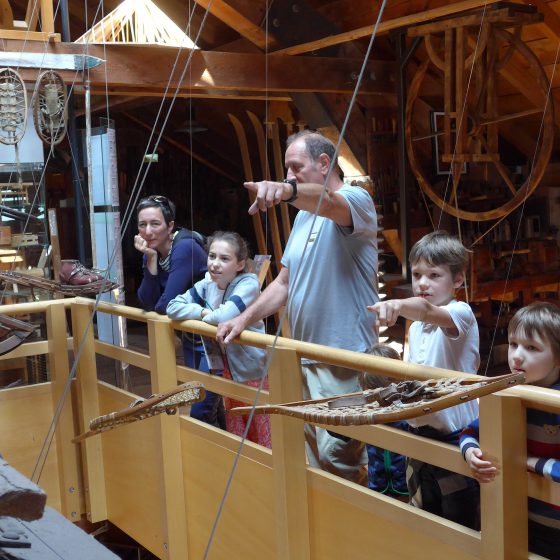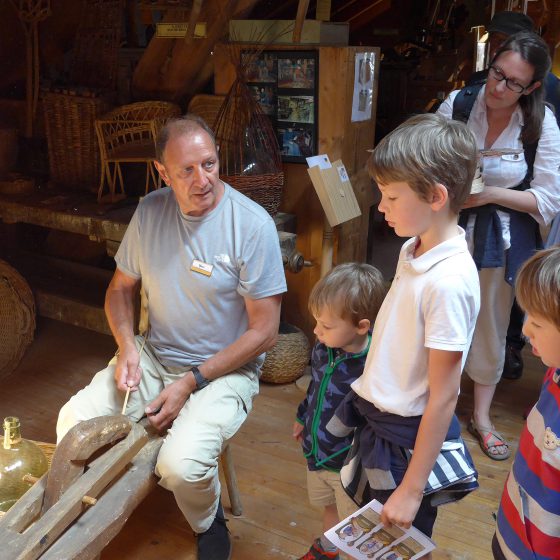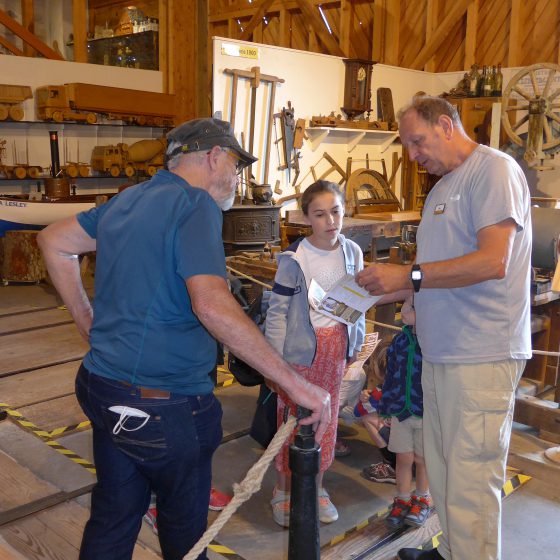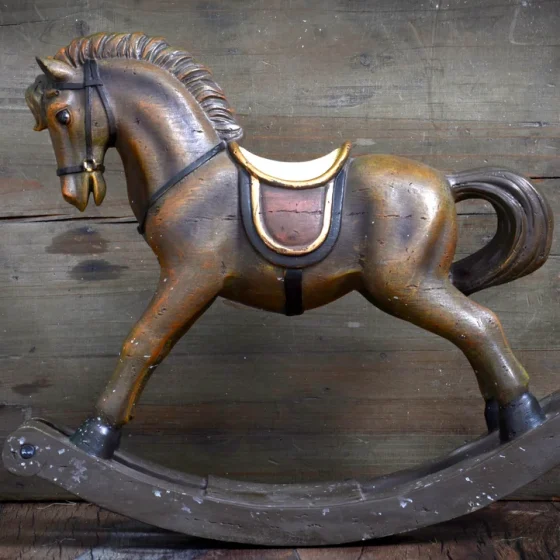WORKSHOPS AND MACHINERY
in the Museum of Woodworking and Heritage
The museum of woodcrafts > Workshops and machinery
The hydraulic frame saw
in the Museum of Woodworking and Heritage
This is the oldest type of mechanical saw (dating from 130 years ago). It would have been powered by a source of water and a water wheel.
It originates from the valley of Val d’Orbey. It was able to cut boards or beams at a speed of 1.20 metres a minute, which was revolutionary at the time. Interestingly, safety was already a point of concern: boiteux were small wooden pieces designed to stop the saw in action or to operate the machine extremely easily.
In addition, it was equipped with a sawyer’s bell, an ingenious yet simple device that warned the sagard (a local word for “sawyer” in the Vosges region) that rang when the cutting was coming to an end.
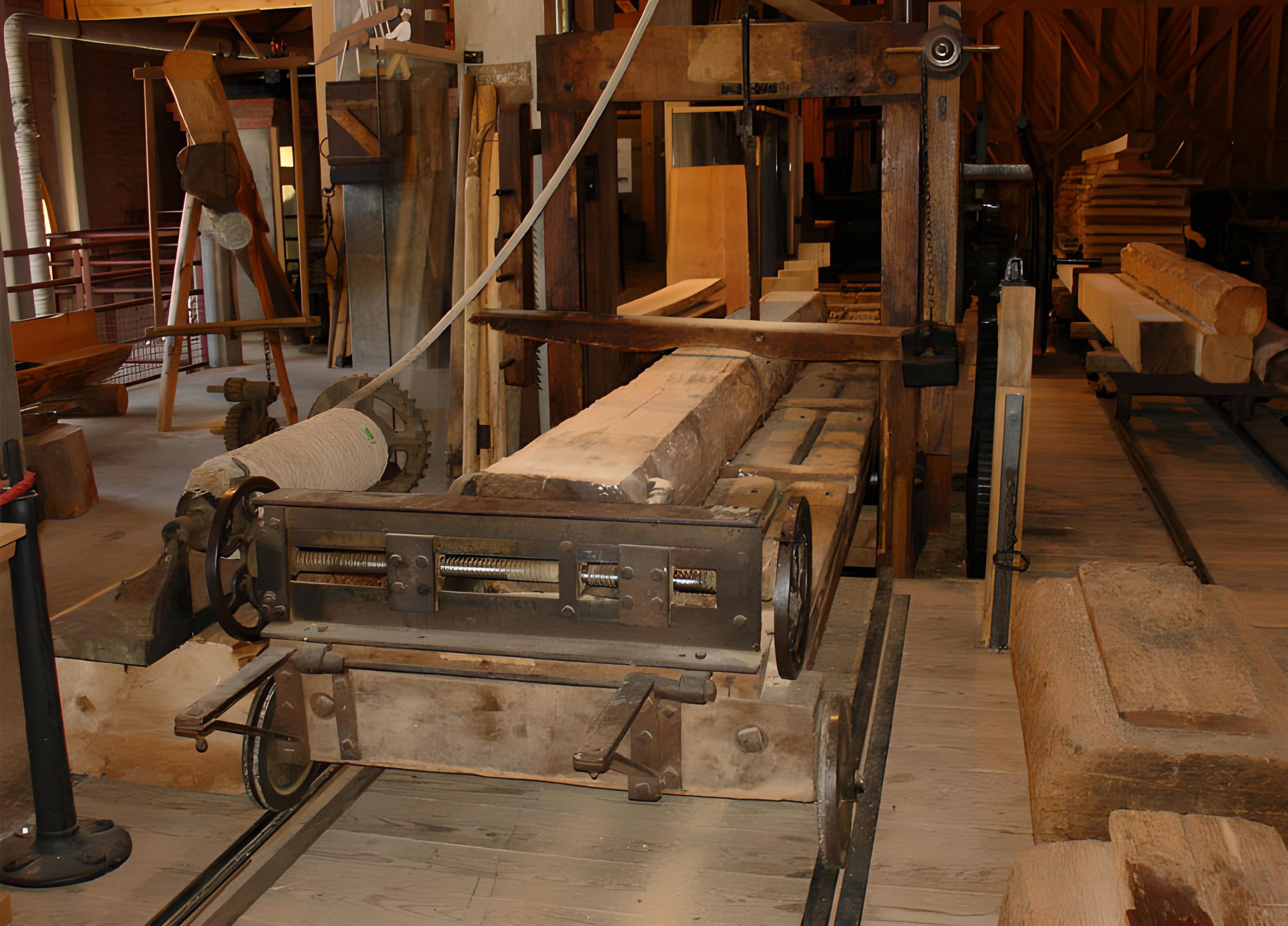
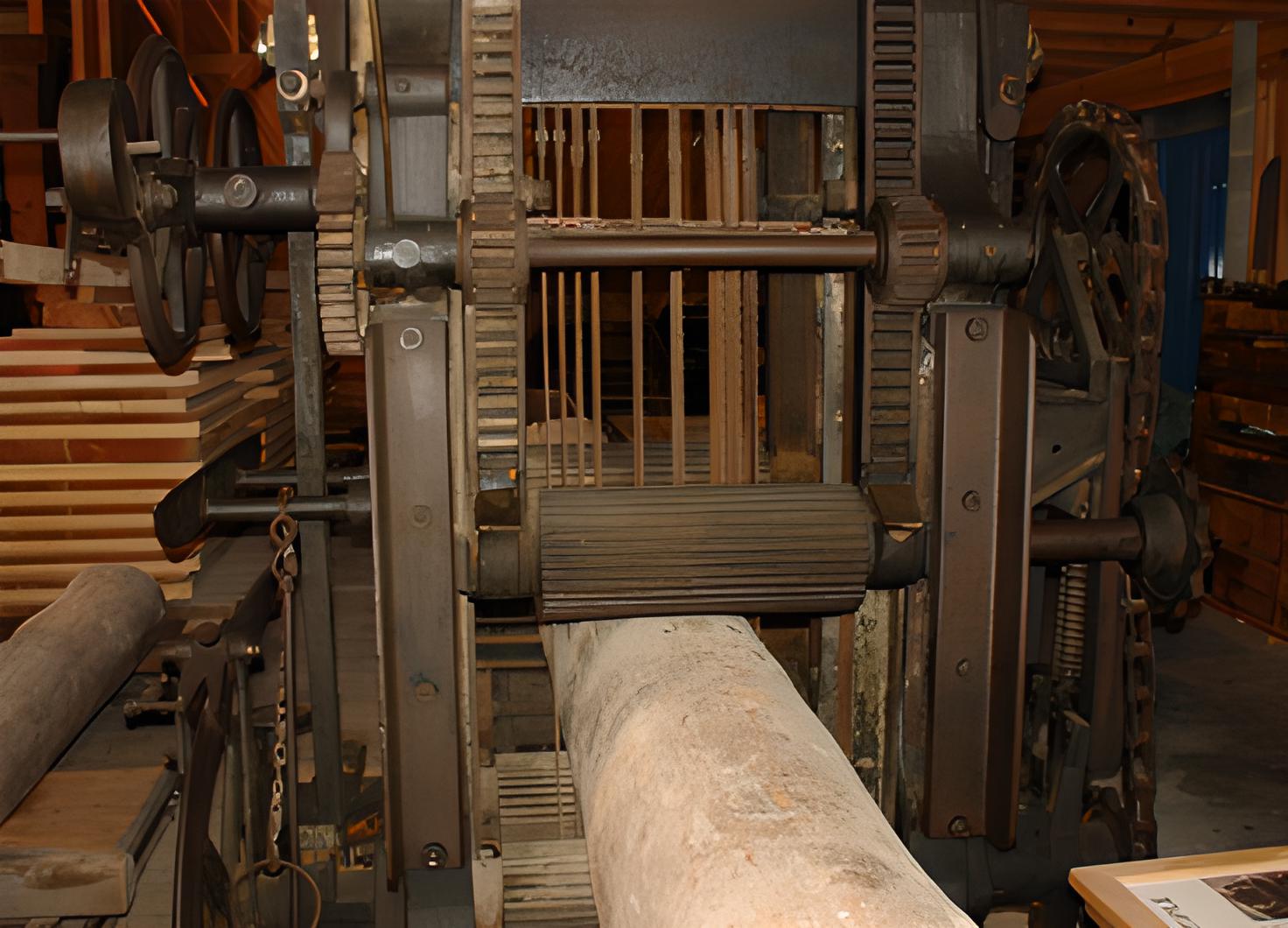
The rip saw
in the Museum of Woodworking and Heritage
This saw was used to cut boards and planks to length. Built in the early 20th century in the commune of Saint-Dié-des-Vosges, it was operated in a sawmill in the town of Orbey until the 1980s.
The multi-saw
in the Museum of Woodworking and Heritage
Dating from 1912, this is a more advanced version of the hydraulic frame saw. It can shape planks or beams. It contains several saws and can cut an entire trunk in one go.
It has a cutting speed of approx. 3 metres a minute.
The pit saw
in the Museum of Woodworking and Heritage
This type of saw is also known as the scie de chèvre (literally “goat saw”) in French. It is the ancestor of the hydraulic frame saw and was invented in the 12th century.
It was operated manually by two people: the chevrier or goatherd on top of the log and the renardier or fox-catcher in the pit below. They alternately pulled and pushed the frame saw to produce beams and boards.
It was back-breaking work. The two-sawyer crew could reach an output of 12 beams a day.

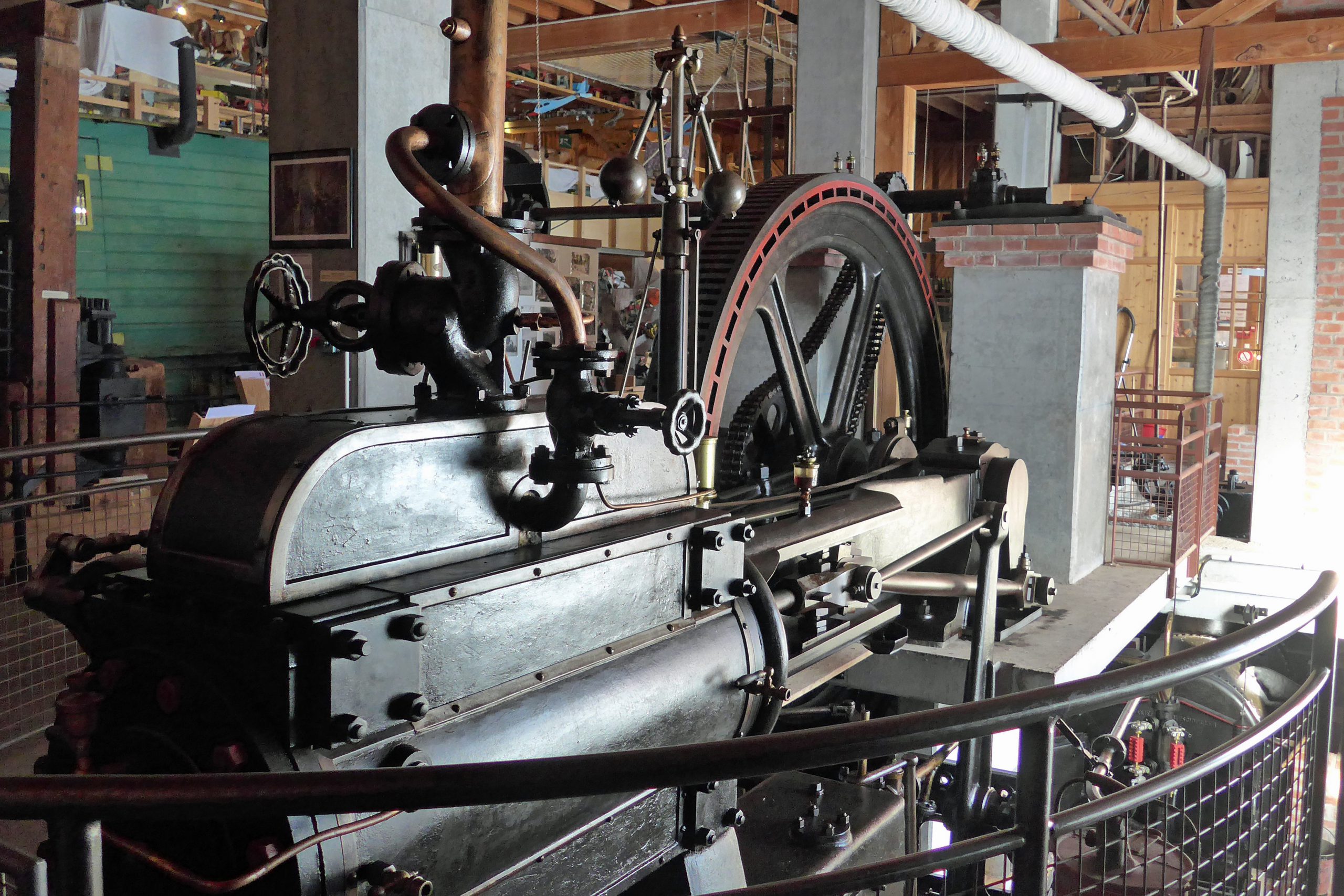
The steam engine
in the Museum of Woodworking and Heritage
This energy-producing machine helped power the global industrial revolution.
Our machine dates from 1896. It was built in Alsace, in the communes of Thann and Bitschwillerlès-Thann (Haut-Rhin) under an American licence.
It works like a locomotive and can reach 100 revolutions a minute at full capacity. The energy produced is distributed to individual machines via a whole network of transmissions.
The maintenance and sharpening workshop
in the Museum of Woodworking and Heritage
A range of sharpening machines were used to sharpen blades, restoring or correcting the original profile.
During this operation, tooth setting is essential. This process involves bending the saw’s teeth to remove any sawdust. Teeth can vary by country.
You will also be able to see how the energy produced is distributed by the steam engine, via the transmissions and leather belts.
A generator dating from 1909 is also connected to the transmissions, providing light for the workshops and machinery.
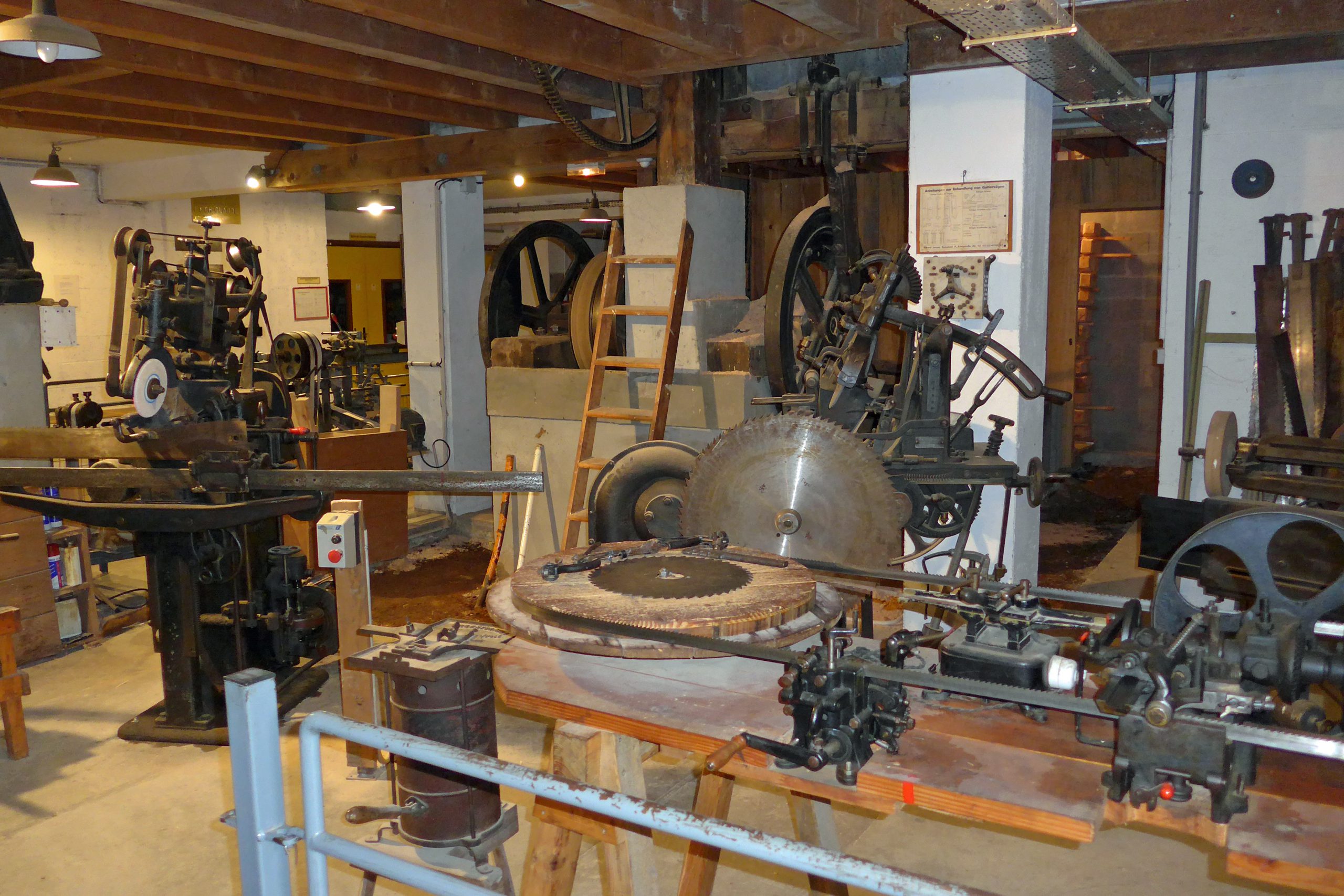
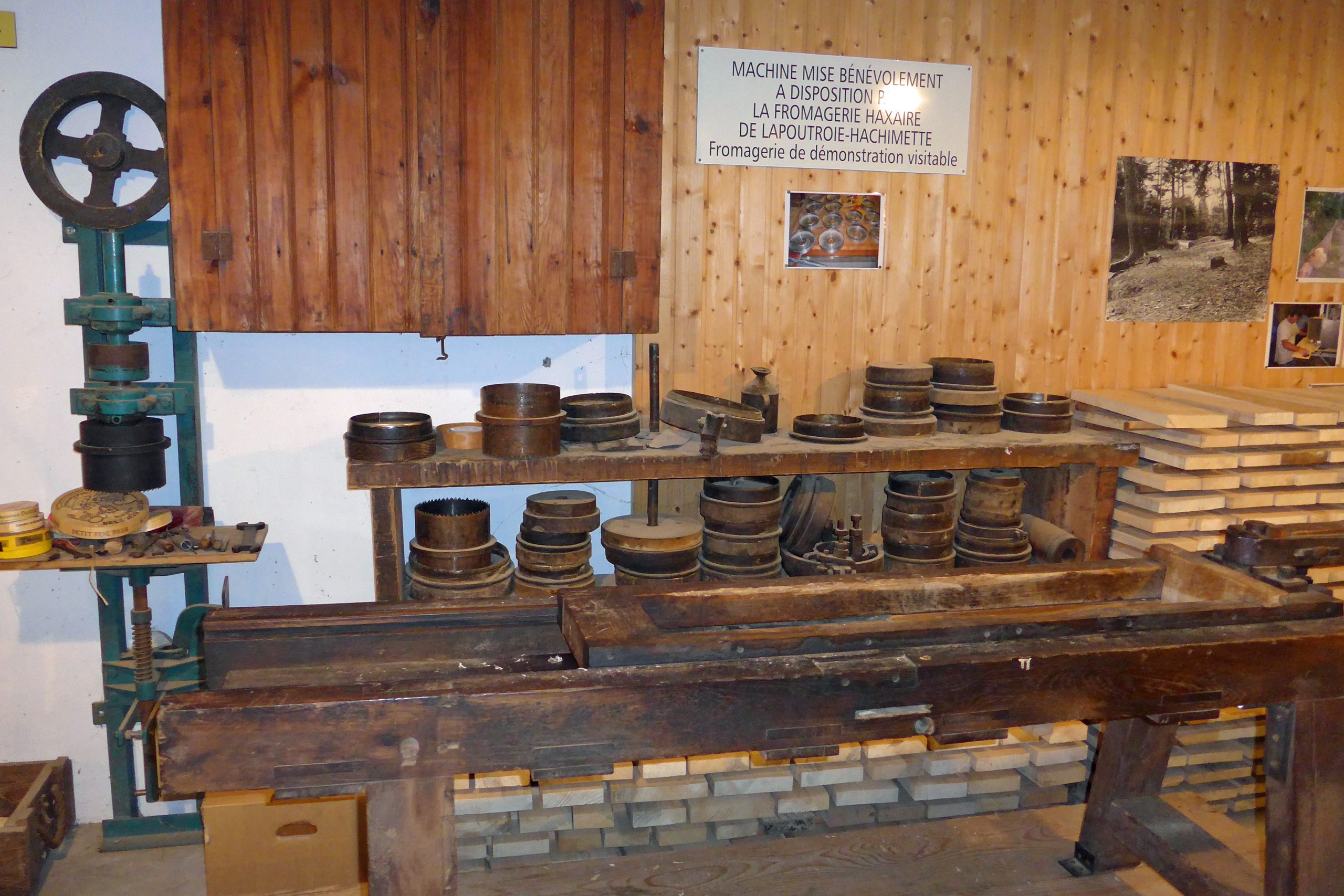
The cheese box production workshop
in the Museum of Woodworking and Heritage
Various tools – slider machines, hole saws and presses – were used to manufacture the bottoms and lids of cheese boxes.
The round edge is made using a large plane (a local sort known as a targeuse), dating from 1856, and which is powered by a water wheel and gears, unusually made of wood.
Spruce wood is particularly suitable for making these boxes.
The final operation consists of stapling the round edge to the lid or the bottom. This was women’s work in the workshop.
This workshop was in operation until the late 1960s.
Around the forge, you can discover machines assembled by our in-house artisans with parts recovered from tanks demolished during the Battle of the Bulge in December 1944.
The carpentry workshop
in the Museum of Woodworking and Heritage
Reconstructed from a 1930 workshop, this includes all sorts of equipment, such a special type of plane used for crafting internal cornices (moulded board for house cornices), the spindle-moulding machine (for making mouldings), clamps, and, among other things, special fire buckets, with the particular feature of having rounded bottoms to prevent them from being put down on the ground after use, so they had to be hung in their designated place
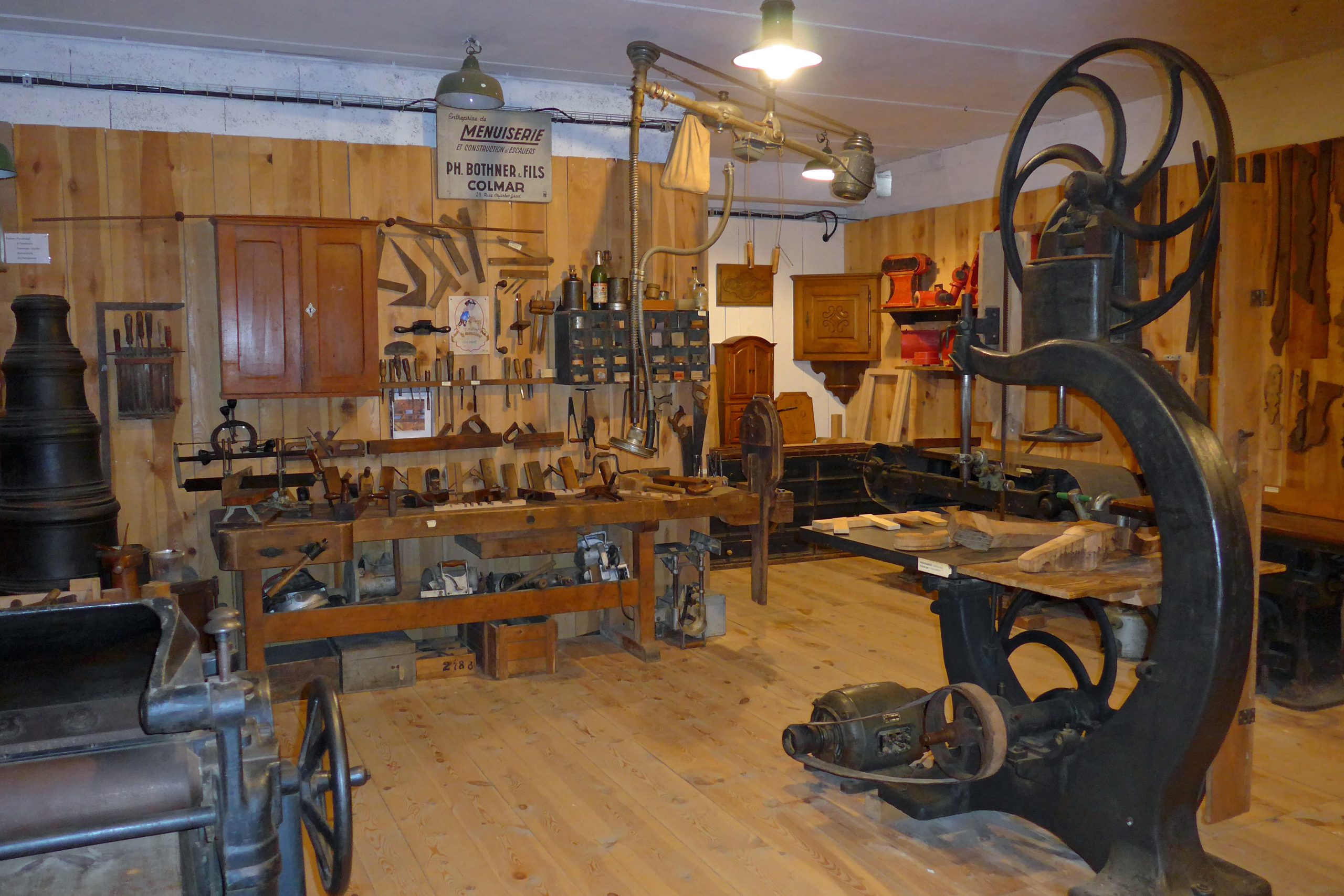
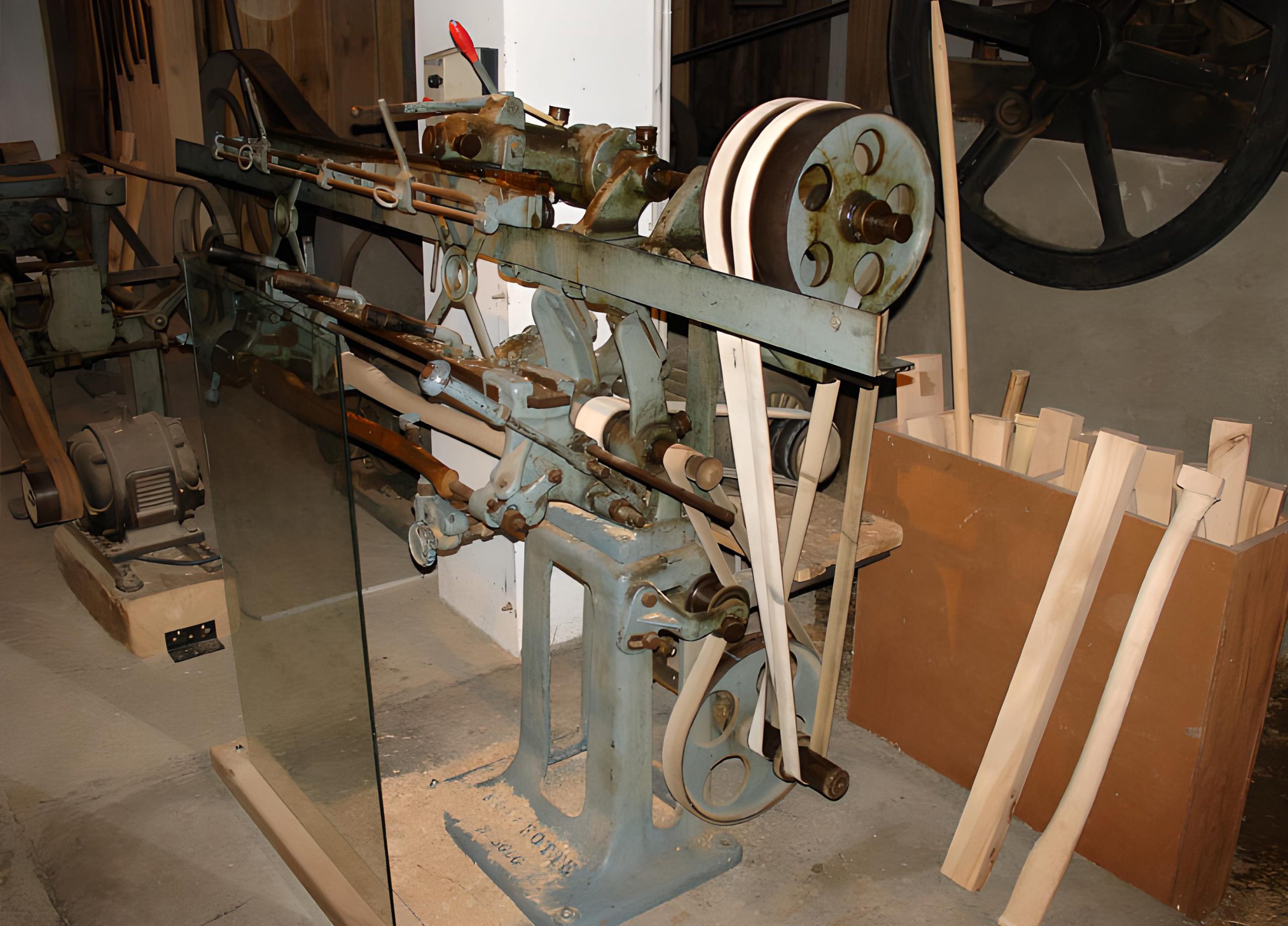
The handle duplicator
in the Museum of Woodworking and Heritage
Produced in 1923, this automated machine was designed to produce axe handles by copying them.
It is a nifty invention operated by three pulleys and a belt system.
It was patented without a government guarantee (under an old type of patent known as a breveté sans garantie du gouvernement).
The wheelwright machine
in the Museum of Woodworking and Heritage
This machine was used to make spokes for cart wheels by reversed copying, as it can simultaneously make spokes for the right and left wheels.
The clog-making workshop
in the Museum of Woodworking and Heritage
Partially mechanised clog-making workshop, dating from 1930.
Clog-making involves a series of steps:
– First a rough sole is created
– The clog is then mounted on a lathe to shape the outside of the shoe
– Next a dual action borer is used to carve out the interior
– The clogs are finished with different tools, such as a clog-maker’s knife to smooth the bottom and a large paring knife to give it its final shape. The tip of the shoe can vary by region and clog-maker
– The shoes are sanded. Lastly, decoratively engravings can be made on the clogs.
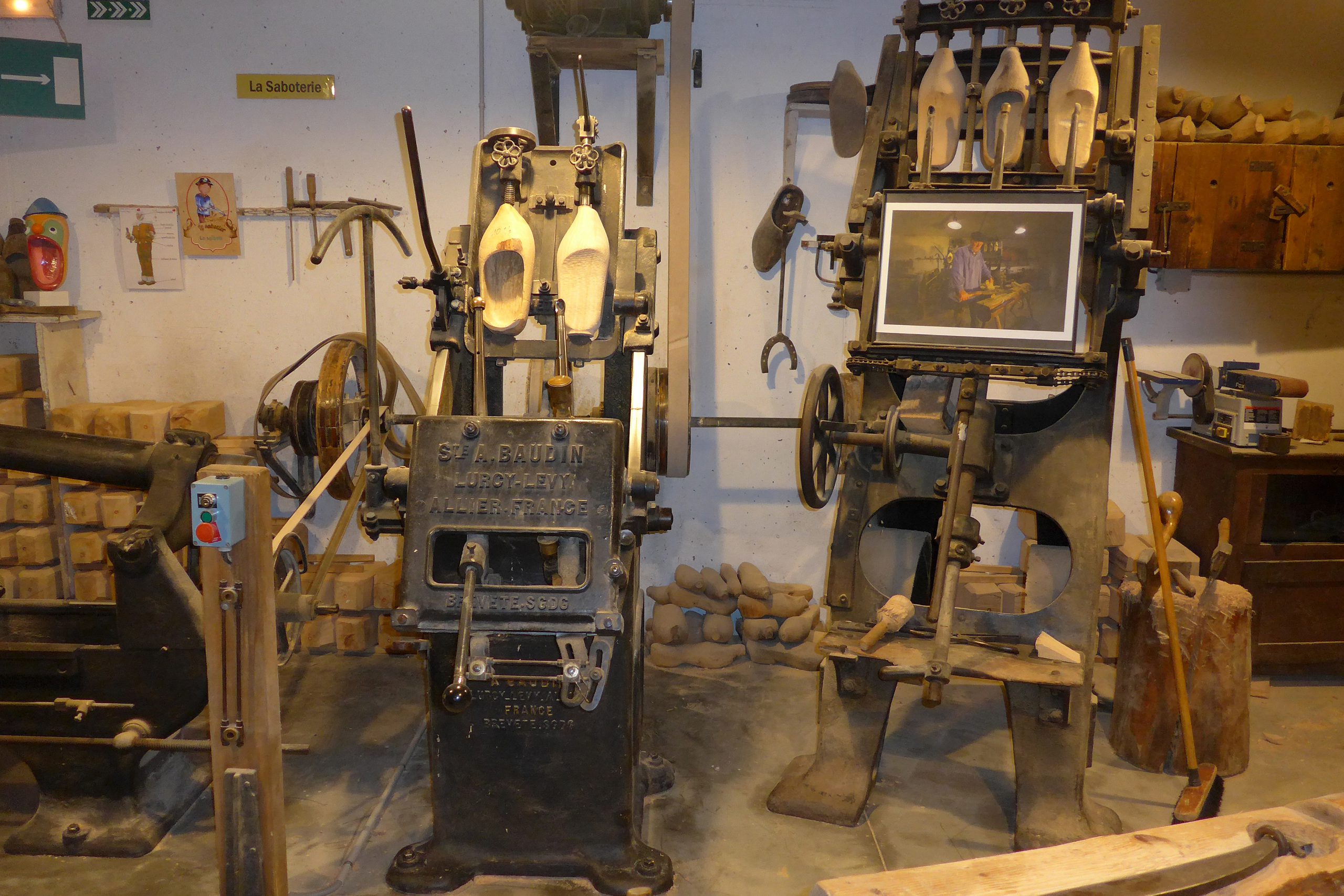
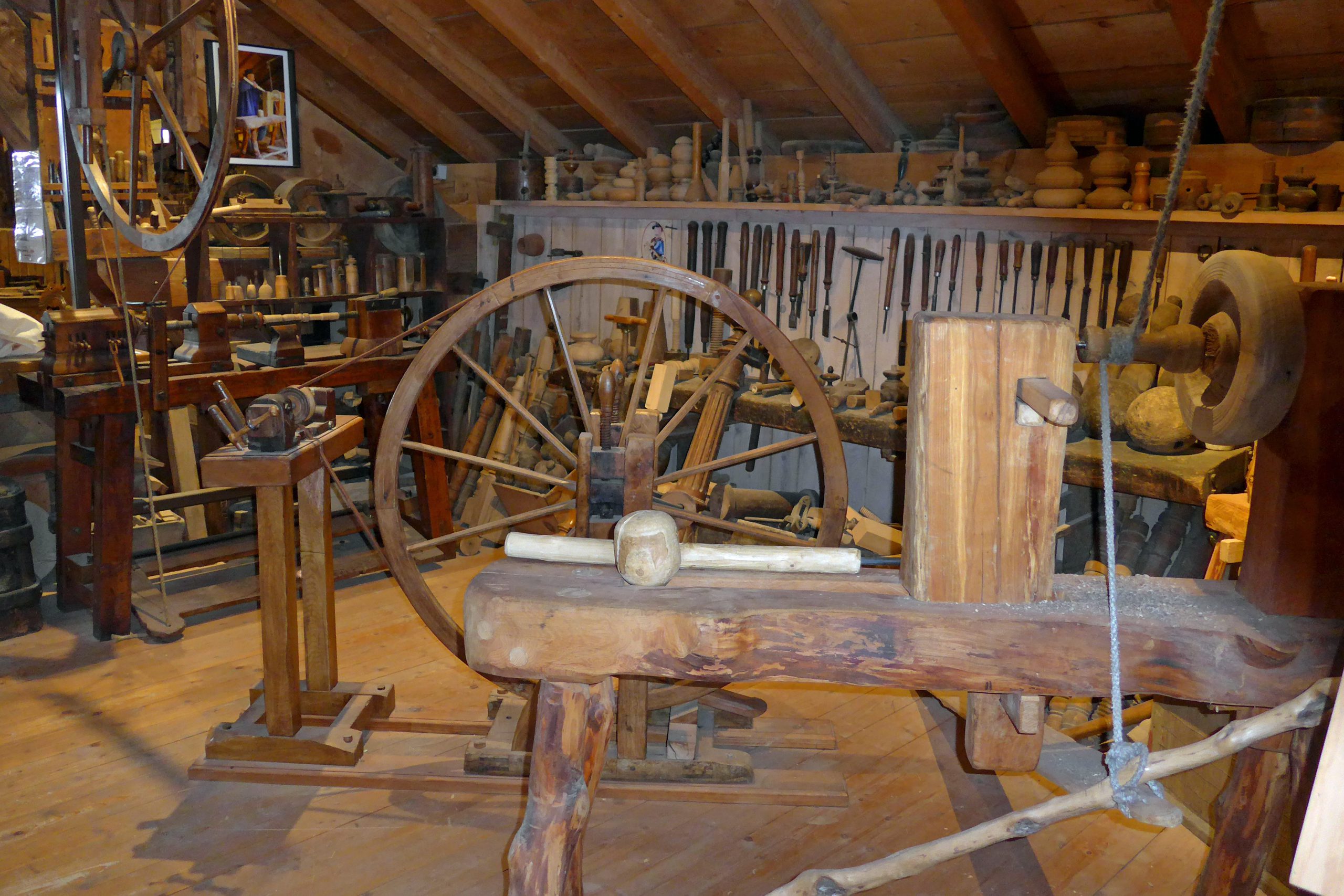
Early workshops
in the Museum of Woodworking and Heritage
The tour continues with a visit of the various workshops belonging to the: woodcutter, wheelwright, clog maker, farmer, cooper, woodturner, carpenter and basket maker, which all predate mechanisation.
You can also see a number of traditional objects and tools, some of which are quite unusual.
The visit ends on the ground floor with:
– Mobile saws such as the 1953 “Frégate” or the “Kaelblé.” This saw, which is powered by an oil engine, was transported from house to house to saw firewood. It dates from 1900. Its main characteristic is that it has wheels similar to cart wheels surrounded by iron bands
– Chainsaws of all sizes, a miniature multi-saw, the boring of wooden water pipes and the debarking of certain trees to collect the tannin used for tanning leather.
Finally, you can try your hand at using a two-man saw.
Discover in images
workshops and machinery
CONTACT US
we are available and at your service

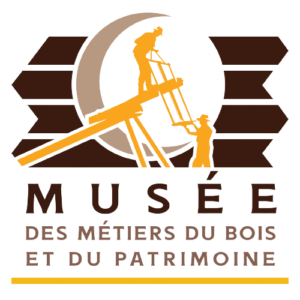



 Open today from 9a.m. to 12p.m. and 2p.m. to 6p.m.
Open today from 9a.m. to 12p.m. and 2p.m. to 6p.m. Go to the Labaroche wood museum
Go to the Labaroche wood museum Tel. +33 (0)3 89 78 94 18
Tel. +33 (0)3 89 78 94 18

